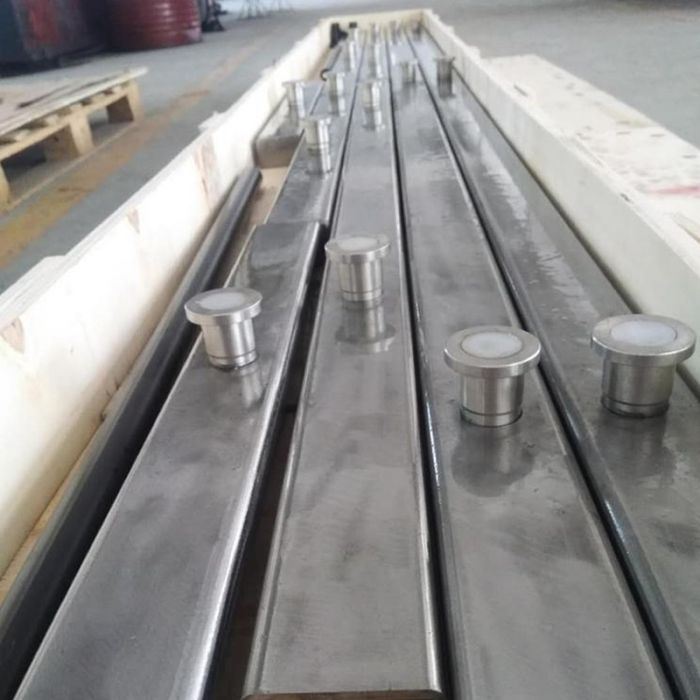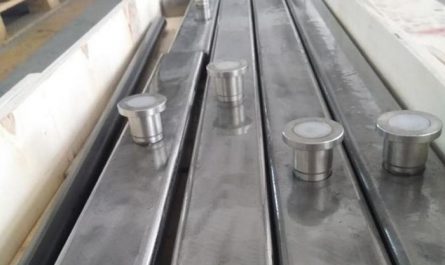Copyright statement: from the network; We are committed to protecting the copyright of the author.
The source of the content has been indicated.
It is only for the purpose of spreading and sharing knowledge, without any other commercial profit.
Please inform us of any infringement of pictures and words, and we will delete them immediately.
thank you! 1.
Construction process of reservation and embedment 1.1 Construction process of reservation and embedment 2.
Casing installation process 2.1.
Casing production According to the comprehensive drawing of electromechanical pipeline, the professional engineer shall count the quantity of rigid waterproof casing, flexible waterproof casing and general packing casing layer by layer and part by part, and determine the length of embedded casing according to the thickness of structural wall, and list the detailed list of various types of casing; The position and displacement deviation of the reserved holes meet the specification requirements and the allowable deviation value, and the casing requirements are shown in the following table: the specific requirements of the serial number item are: 1.
The diameter of the casing made by the casing model is larger than the diameter of the crossing pipe 1 to 2.
The length of the wall casing+the plastering thickness on both sides 3, The casing shall be reserved accurately in the concrete, and both ends of the wall shall be flush with the finish, and the lower end of the floor shall be flush with the floor finish.
2.1 Physical objects of casing fabrication 2.2 Casing selection 2.3 After the reinforcement of the main structure of casing installation is bound, locate the position according to the high geometric dimension of the detailed design drawing, and then place the rigid waterproof casing in the reinforcement for reinforcement.
The floor casing secondary structural wall casing uses structural reinforcement or additional reinforcement to reinforce the casing.
The intersection of the “#” reinforcement, the casing and the reinforcement shall be welded to make the casing firmly fixed in the reinforcement mesh.
The flexible waterproof sleeve shall protect the bolt hole of the flange to prevent the concrete from blocking the bolt hole, which is not conducive to the installation of the flange gland of the flexible waterproof sleeve in the later stage.
Installation of general packing sleeve Installation of general packing sleeve 3.
Installation of wire box in the concrete wall.
The elevation and distance from the wall shall be controlled during the embedded construction of the electric box on the cast-in-place concrete wall column.
In order to prevent position deviation during embedding, four additional reinforcements shall be used to bind the embedded pipe and wire box, and then bind with the main reinforcement firmly.
The limit reinforcement shall be close to the wire box and bound with the main reinforcement with thick iron wire.
Spot welding of the main reinforcement is not allowed.
1 – Main reinforcement 2-12 # lead wire binding 3 – wire box 4 – electric welding 5 – installation of additional reinforcement wire box: installation location, accurate elevation 4.
Key points of embedded wire pipe 4.1.
Key points of embedded wire pipe installation A.
The arrangement of pipelines should not be close together, at least the gap should not be less than 20 mm, and the pipeline crossing should not overlap three or more layers to avoid affecting the floor elevation.
The PVC conduit must be laid in the shortest route, and the conduit cannot be bypassed.
B.
The straight pipe shall be fixed and bound with binding wire every 1m, and the junction of the wire box and the lamp cap box shall be fixed and bound at the left and right 50mm.
C.
The length reserved from the bottom to the top of the PVC line pipe orifice shall be controlled within 80mm for the convenience of finished product protection in the future.
The length reserved from the top to the bottom of the pipe orifice shall be controlled within 100mm to avoid bending and breaking of the line pipe in the future masonry construction, which cannot be connected during the secondary piping.
D.
The maximum pipe diameter of the line pipe in the middle of the wall shall not exceed 50mm, and it shall not exceed 25mm in the floor, and the distance between the line pipe and the surface of the building and structure shall not be less than 15mm, The corner angle of the conduit shall be greater than 90 degrees.
4.2 The installation of embedded conduits, the installation of physical conduits, the installation of conduits, the installation of PVC conduits, the laying spacing of conduits, the installation of rigid conduits and the protection of finished products of exposed conduits in place, the installation of galvanized conduits, the concealed laying of galvanized conduits, the horizontal and vertical, the spacing is consistent, the binding of rigid conduits and the protection of finished products of exposed conduits in place, 5.
The secondary embedment 5.1 Key points of the secondary embedment construction When the insulating conduits are grooved and buried on the masonry, the groove width and depth are 5mm~10mm larger than the outer diameter of the conduits, The cement mortar with strength grade no less than M10 shall be used for plastering protection, and the mortar for slot repair shall be 2mm lower than the wall surface.
Masonry wall line pipe laying Masonry wall line box installation and laying Masonry wall line line box template 5.3 Line pipe secondary pre-buried physical line pipe laying Line drawing, slot fixing, slot cutting, slot removal, completion of pipe laying and solid pipe plastering Buried line box Line line box laying Line box laying Line box laying Line box laying Line box laying Line box laying Line box laying Line box laying Line box laying Accurate positioning, slot removal specification, joint filling, leveling, mechanical and electrical installation, reserved and pre-buried project quality control points 1 In order to ensure the accuracy of reservation and embedment, the following preparations should be made before construction: 1.
Carefully compare the drawings of wind, water, electricity and weak current disciplines, architectural and structural drawings, and check the positions of reserved holes marked in the architectural structural drawings.
If the positions and elevations are inconsistent, the project negotiation should be handled in a timely manner, and corrections should be made during construction.
For those not marked in the structural drawing, the position, elevation and size of the holes to be reserved shall be clearly marked on the structural drawing according to the mechanical and electrical professional drawings.
2.
Construction personnel shall cooperate with civil engineering to reserve and embed pipelines, iron components, equipment foundations and holes according to construction drawings and detailed design drawings.
During the construction of the structure, the reservation and embedment shall follow the progress of the structure.
When conditions are met, the construction shall be carried out in a timely manner, and the concealed pre-inspection and inspection work shall be done well.
It is strictly forbidden to leave the wrong or omitted reservation.
3.
The site engineer shall conduct technical review with reference to the construction drawings before concrete pouring and concealment to confirm the location, size and quantity of various embedded parts and reserved holes, and the direction of embedded conduits shall be consistent with the drawings.
Check the fixing degree of various embedded parts and reinforcement formwork to prevent deviation during concrete pouring.
4.
All metal embedded parts shall be rust-proof and anti-corrosive inside and outside.
When the anti-corrosive coating is damaged during construction, it shall be timely brushed.
5.
Pay attention to the special regulations of special places or special specialties, such as the requirements of embedded materials in civil air defense areas, the model and elevation requirements of kindergarten sockets, etc.
.


